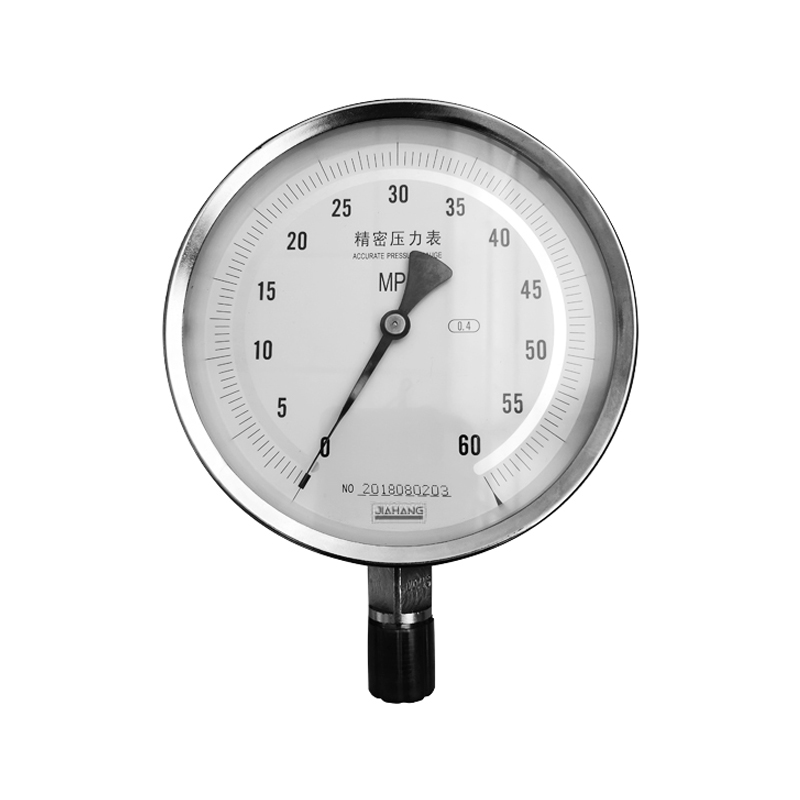
Авг . 12, 2024 00:02 Back to list
Differential Pressure Gauge with Switch Features and Applications in Industrial Settings
Understanding Differential Pressure Gauges with Switch Functionality
Differential pressure gauges are crucial instruments widely used across various industries, including oil and gas, water treatment, HVAC, and pharmaceuticals. These gauges measure the difference in pressure between two points in a system, providing critical data for monitoring and maintaining operational efficiency. A specific subset of these gauges incorporates switch functionality, making them even more valuable in process control and automation.
What is a Differential Pressure Gauge?
At its core, a differential pressure gauge consists of a sensing element that detects pressure differences. Typically, it features two ports one connected to the high-pressure side of the system and the other to the low-pressure side. The gauge interprets these pressure readings and presents them as a differential value, usually in psi, Pa, or mmHg.
The principle behind these devices can be traced back to basic physics, where pressure differences drive fluid flow. Understanding these differences helps operators maintain balance within a system, ensuring that processes run smoothly and efficiently.
Importance of Switch Functionality
The integration of switch functionality into differential pressure gauges adds an essential layer of automation and safety to their operation. These gauges not only display pressure readings but also activate alarms or control systems when pressure thresholds are exceeded. This is particularly important in environments where maintaining specific pressure levels is critical for safety and efficiency.
For instance, in a filtration system, a differential pressure gauge with a switch can alert operators when the filter is clogged or when maintenance is required
. Upon detecting a predetermined pressure differential, the gauge can trigger an alarm or even shut down the system, preventing potential equipment damage or hazardous conditions.famous wika differential pressure gauge with switch

Features and Applications
Modern differential pressure gauges with switch mechanisms come equipped with various features tailored to meet the specific needs of different industries
1. Adjustable Set Points Operators can set specific pressure thresholds for alarms or control actions, enhancing flexibility and customization in various applications. 2. Visual Indicators Many gauges come with analog or digital displays that provide real-time readings, allowing for quick assessment and monitoring.
3. Robust Construction Differential pressure gauges are designed to withstand harsh environments, ensuring reliability and longevity. They often feature materials resistant to corrosion, vibration, and extreme temperatures.
4. Multi-Point Monitoring Some advanced models allow for the monitoring of multiple locations within a system, providing comprehensive oversight and facilitating better decision-making.
Applications of differential pressure gauges with switch functionality are vast. In the HVAC industry, they are employed to monitor air filters and ensure optimal airflow. In oil and gas, they help maintain appropriate pressures in pipelines and tanks. The pharmaceutical industry relies on these gauges to ensure sterile processes by monitoring pressure differentials in clean rooms and fermentation vessels.
Conclusion
In conclusion, differential pressure gauges with switch functionality represent a significant advancement in process measurement and automation. By providing essential real-time data and automating system responses, these instruments enhance operational efficiency and safety across various applications. As industries continue to evolve and demand more sophisticated monitoring solutions, differential pressure gauges will undoubtedly play an integral role in driving performance and reliability in process management. The adaptability and critical functions of these gauges make them indispensable tools in modern engineering and industrial applications.
-
High-Precision 5 Valve Manifold Differential Pressure Gauge Suppliers
NewsApr.29,2025
-
High-Precision Diaphragm Vacuum Pressure Gauges Manufacturers & Quotes
NewsApr.29,2025
-
Omega Differential Pressure Gauges High Accuracy & Durability
NewsApr.28,2025
-
Low Pressure Differential Pressure Gauges Precision Solutions & Quotes
NewsApr.28,2025
-
Digital Diaphragm Pressure Gaauge Precision Measurement & OEM Quotes
NewsApr.28,2025
-
Differential Pressure Gauge China Price High-Accuracy & Best Quotes
NewsApr.28,2025
